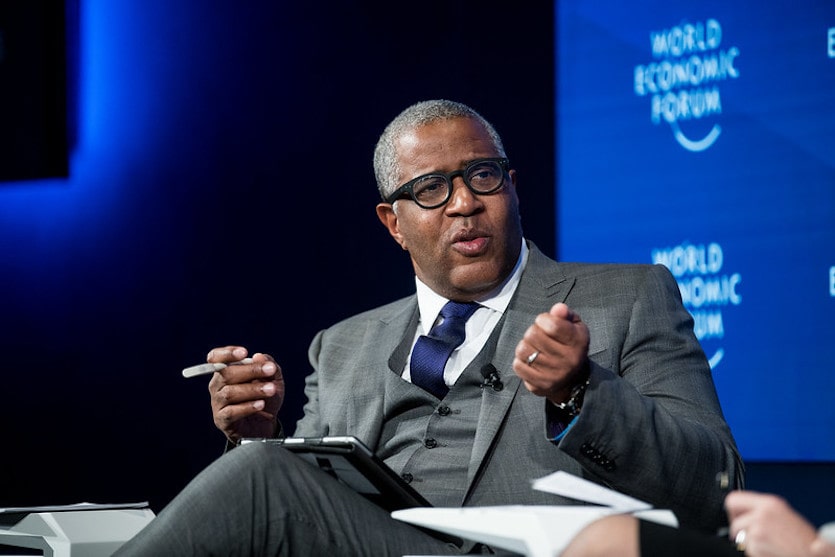
Intel pledges $300 million to make its workforce more diverse
January 8, 2015
Civil rights activist Michael Skolnik says ‘majority of people want to believe I am not white’
January 23, 2015by Kunbi Tinuoye | Originally published on September 18, 2013
Twenty-eight years after being at the center of a deadly encounter with the city of Philadelphia, Ramona Africa still bears the scars of the horrific tragedy.
She says it is not just her physical injuries but fury over what she describes as an orchestrated military-style attack that killed 11 members of her “family” in their home.
“I feel anger and bitterness,” says Africa. “They tried to burn me alive and shoot me to death.”
Africa, now 58, is referring to the hours-long standoff between a small radical collective called MOVE and armed police at a row house in a middle-class neighborhood in West Philadelphia.
She was one of several MOVE members inside the group’s communal headquarters on Osage Avenue as the shootout spiraled out of control.
The events leading up to the bloody encounter, the horrific consequences and aftermath have blighted the community ever since. Still, for the most part the tragedy remains a marginal memory for those that lived in that era.
So much so that a coming documentary, Let the Fire Burn, by up-and-coming director Jason Osder, who is white, seeks to put the events of that fateful day back in the public realm.
The film, which opens October 2nd in theaters, has received widespread praise. Africa says she was interviewed by Osder but was not featured in the film, which only used archive footage.
Accounts of what happened vary but Africa paints a grim picture of a relentless siege by authorities using tear gas, water cannons and semiautomatic firearms, after they were refused entry to serve arrest warrants on four members of the group.
“By the time they had finished, the explosives had blown off the front porch,” says Africa.
In fact, the conflict was simmering on Mother’s Day (May 12th) when authorities evacuated the block, telling residents there would be a police action the next day.
The next day, the massive police operation culminated in a helicopter dropping two pounds of military explosives on 6221 Osage Avenue.
“Without any announcement, warning or anything, a helicopter flew over our home and dropped two bombs on the roof of our house and it ignited a fire,” says Africa.
Chillingly, she says when the bomb hit and they tried to flee, police opened fire to prevent them from escaping the blazing inferno. Her account was later confirmed by the PSIC or MOVE commission.
The bomb attack resulted in the unthinkable becoming a reality. Authorities in the United States had dropped a bomb on U.S citizens.
Eleven MOVE members, including 5 children, died.
The fire was so ferocious it swept across the terraced properties and destroyed 61 homes in the entire block leaving 250 people – mainly African-Americans – homeless in what had been a desirable, sought-after area.
Much like the Tulsa Race Riots in 1921, where a bloody confrontation completely destroyed a thriving black community, the neighborhood was burned to the ground.
A decision was also taken by heads of the police and fire departments to let the let the fire burn despite firefighters with water cannons standing next to the house.
Linn Washington Jr., 62, a journalist and associate professor of journalism at Temple University, was a rookie reporter in Philadelphia during the late 1970s and early ’80s.
He was one of a handful of journalists on the scene during a major incident between police and MOVE in 1978. He was also on the ground “dodging bullets” outside Osage Avenue from Sunday through May 13.
“They sat there and watched the fire go from an insipid blaze to a full-blown fire,” says Washington. “Then when they saw the fire leaping from the roofs and they watched. It was a predominately black neighborhood. They didn’t care about the property.”
He was one of the few eyewitnesses to watch Africa, then 29, and 13-year-old Birdie escape before they were whisked off in police cars. Africa, the sole adult survivor of the violent confrontation, survived with major burns by crawling through a basement window with Birdie, the only child to make it out alive.
Africa was taken into custody and hospitalized for a month for severe degree burns. Then she was served a seven-year sentence for inciting a riot, which she describes as “trumped up charges.”
Washington says the bomb attack on May 13, 1985 was a direct result of the city’s confrontation with MOVE in 1978. This resulted in nine MOVE members, known as MOVE 9, being given lengthy sentences for the murder of a Philadelphia police officer with a single bullet.
After the 1978 standoff, MOVE members on Osage Avenue held their neighbors hostage by campaign of “physical and emotional assault,” which included broadcasting political messages by bullhorn at all hours, says Washington.
They hoped this would put pressure on the authorities to release the nine imprisoned members they felt authorities had unjustly convicted. MOVE believed the slain officer was shot by police fire.
Africa believes that police arrived with warrants only because “we wouldn’t go away.”
“Not only could they not bribe us, buy us off, we couldn’t stop talking about our MOVE 9 brothers and sisters and their 30 to 100-year life sentences.”
Still, Washington says the living conditions at 6221 Osage Avenue were dire and the row home attracted rats and roaches, much to the frustration of their neighbors who complained to the city government.
MOVE advocated a radical “back-to-nature” lifestyle, which included collecting stray cats and dogs. They considered it morally wrong to kill vermin with pest control. Each member – they all wore dreadlocks – adopted the surname “Africa” after the group’s founder, John Africa.
Though, Africa laughs off claims they were a group of black militants who lived in squalid conditions.
“Every one of these people who talk about our living conditions has never been in a MOVE house,” she says. “There’s no credibility. The government said all kinds of crazy stuff about us to try to turn the public against us.”
“Clearly the police were heavy handed, engaged in unlawful and illegal activities and that cover up continues today,” says Washington. But he adds that, “MOVE were victimized but in many incidents they victimized.”
Mel Dorn, who was born and raised in Philadelphia, describes himself as Freedom Fighter and activist. He says the bombing took place at a time of police brutality and intimidation of African-Americans in Philadelphia.
“It was a war zone, especially in the black community. Philadelphia had an open door policy. Officers knew it was OK to beat up black people.”
During the 1985 gun battle, Washington says he heard shots coming from 6221 Osage Avenue but that was no match to the weaponry in the hands of authorities.
In fact, he describes the events leading up to the bombing akin to “full-blown war like in Beirut or Syria.” He adds, “Bullets were flying everywhere; I had to crawl under my car.”
“If I was to apportion blame, 70 percent would be on the authorities and 30 percent on MOVE.”
Washington says though it has not been widely reported “the opportunity to negotiate was missed on the part of the authorities.”
Earlier on in the conflict Washington says he witnessed John Africa (not inside 6221 Osage) alongside activist Randolph Means and former judge Robert Williams trying to cut a deal. They repeatedly called the then-Philadelphia Mayor Goode to say they would surrender “if they received a promise that the 1978 matter would be looked into,” says Washington. The mayor did not pick up the calls, he adds.
Following the bombing, which has captured on television, there was a fierce debate of how something like this could have happened.
Still, despite the two grand jury investigations and a commission that found the top officials “grossly negligent,” no one from city government has ever been charged criminally. “Even to this day the authorities have not been held accountable for what happened on that fateful day,” says Washington.
The commission also said the deaths of the MOVE children “appeared to be unjustified homicide” because police had the chance to take them out of the house. Authorities had used excessive force in firing 10,000 rounds of ammunition into the house and the plan to drop explosives was “reckless” and “unconscionable.”
In the aftermath of the botched police operation, Washington says the plight of the residents on the 6200 block of Osage Avenue has been tragic. “The houses were rebuilt not only in a shoddy fashion but also in a dangerous fashion,” he says. “The houses were pitiful.”
In 1996, Ramona successfully sued the City of Philadelphia and was awarded $500,000 for pain, suffering, and injuries. “That was a slap in the face considering they award people a $1million for pouring a cup of coffee in McDonalds,” says Africa.
Still traumatized by the events of 1985, Africa remains an active member of MOVE and travels around the globe meeting supporters and giving lectures. She says her main focus is to continue to fight for the release of the MOVE 9 members, who have been denied parole.
Follow Kunbi Tinuoye on Twitter at @Kunbiti








